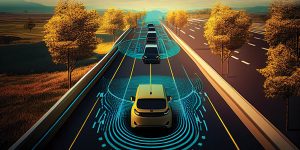The US administration announced the approval of Electric Vehicle Infrastructure Deployment Plans for all 50 States of the nation, the District of Columbia and Puerto Rico ahead of schedule on Tuesday, September 27.
“America led the original automotive revolution in the last century, and today, thanks to the historic resources in the President’s Bipartisan Infrastructure Law, we’re poised to lead in the 21st century with electric vehicles,” said U.S. Transportation Secretary Pete Buttigieg at the announcement of these plans. “We have approved plans for all 50 States, Puerto Rico and the District of Columbia to help ensure that Americans in every part of the country, from the largest cities to the most rural communities, can be positioned to unlock the savings and benefits of electric vehicles.”
Key applications of the EV charging plans
The just announced Electric Vehicle (EV) charging plans can be applied in several use areas. Some key application areas include upgradation of existing and construction of new EV charging infrastructure, operation and maintenance costs of these charging stations and installation of onsite electrical service equipment. The plans would also encourage and enable effective community and stakeholder engagement and workforce development activities. Other areas may include creating EV charging station signage, data sharing activities and related mapping analysis and activities. Geospatial applications would certainly continue to provide innovative solutions in creating the EV infrastructure and the funding available would further enhance their involvement.
Laws supporting electric vehicle infrastructure development
The Bipartisan Infrastructure Law was announced in 2021 which aims at rebuilding the American infrastructure. Amongst a number of goals the legislation aims to expand public transit options across every state in the country, replacing thousands of deficient transit vehicles, including buses, with clean, zero emission vehicles. The Inflation Reduction Act signed in August 2022 brings forth a law which would reduce about a gigaton (a billion metric tons) of greenhouse gas emissions in 2030 and position America to reduce climate pollution in half by 2030 and reaching net-zero emissions by no later than 2050. Rehauling the transport sector with clean energy resources is a critical goal and requires legislative support providing a strong foundation to each effort spelled out in this direction.

National Electric Vehicle Infrastructure (NEVI) Formula Program
The plans announced on September 27, are all included within the National Electric Vehicle Infrastructure (NEVI) Formula Program, established and funded by the Bipartisan Infrastructure Law. Now all 50 US states, the District of Columbia and Puerto Rico have access to more than USD 1.5 billion funding to help build EV chargers covering approximately 75,000 miles of highway across the country. The NEVI formula funding under the Bipartisan Infrastructure Law offers USD 5 billion available over five years, to build an EV charging network across the country. All initiatives in making electric vehicles and EV charging accessible to all Americans is critical to fighting the climate crisis and is generating an electric vehicle manufacturing boom across the nation.
EV adoption encourages a clean environment
The transportation sector is the largest source of greenhouse gas emissions in the US. So all initiatives to transition to electric cars will make the streets cleaner and make the towns and cities a better place for pedestrians and cyclists. With no tailpipe, pure electric cars produce no carbon dioxide emissions when driving. This reduces air pollution considerably. A team at the Massachusetts Institute of Technology calculated both the carbon dioxide emissions and full lifetime cost, including purchase price, maintenance and fuel, for nearly every new car model on the market. They found electric cars were easily more climate friendly and over time less expensive than gas burning ones.
“With this greenlight, States, the District of Columbia and Puerto Rico can ramp up their work to build out EV charging networks that will make driving an EV more convenient and affordable for their residents and will serve as the backbone of our national EV charging network,” said Acting Federal Highway Administrator Stephanie Pollack at the announcement of these plans. “The Federal Highway Administration will continue to work closely with States as we implement this historic funding under the Bipartisan Infrastructure Law to bring President Biden’s vision for a national electric vehicle network to communities across America.”
This recent announcement marks an important milestone towards making EV charging accessible to all Americans. President Biden has set an ambitious goal for half of all new vehicles sold in 2030 to be zero-emissions vehicles. Transitioning America’s cars to EVs is an important pathway to achieving the President’s goal of reducing the nation’s emissions by 50-52% below 2005 levels by 2030. The Electric Vehicle Infrastructure Deployment Plans announced now are important measures in this direction and all these efforts are in turn laying a foundation to a cleaner environment for all Americans.
Also Read: California’s 2035 Goal For Zero-Emission Vehicles









